Abstract
Cells of the Chinese hamster line V79-8 multiply without a G1 period (i.e., they are G1-) and have an average generation time of 9.5 hr. After mutagenesis and selection we have derived five stable mutants (or variants) of this line that have longer generation times. In each case the increase in generation time is due solely to the introduction of a G1 period into the cell cycle, with no measurable effect on S, G2, or M. Fusions among these five G1+ mutant lines and another presumably nonmutant G1+ line (V79-743) produce hybrid cells lacking a G1 period in all but one case. These complementation tests define five complementation groups among these six G1+ cell lines. The six G1+ lines represent five different causes or bases for the presence of a G1 period. The two G1+ mutants belonging to complementation group V are temperature sensitive for expression of the G1+ phenotype (G1 ≅ 0, 4, and 6 hr at 33°, 37°, and 39°, respectively). In all cases the G1- state is dominant over the G1+ state, suggesting that the presence of G1 represents a “deficient” condition. Mutants of this type may be useful in the analysis of the switch from G1- to G1+ that occurs normally in cleaving embryos and in elucidation of the genetic mechanism(s) responsible for the presence of a measurable G1 in most cells.
Keywords: cell cycle, V79 cells, somatic cell genetics, complementation
Full text
PDF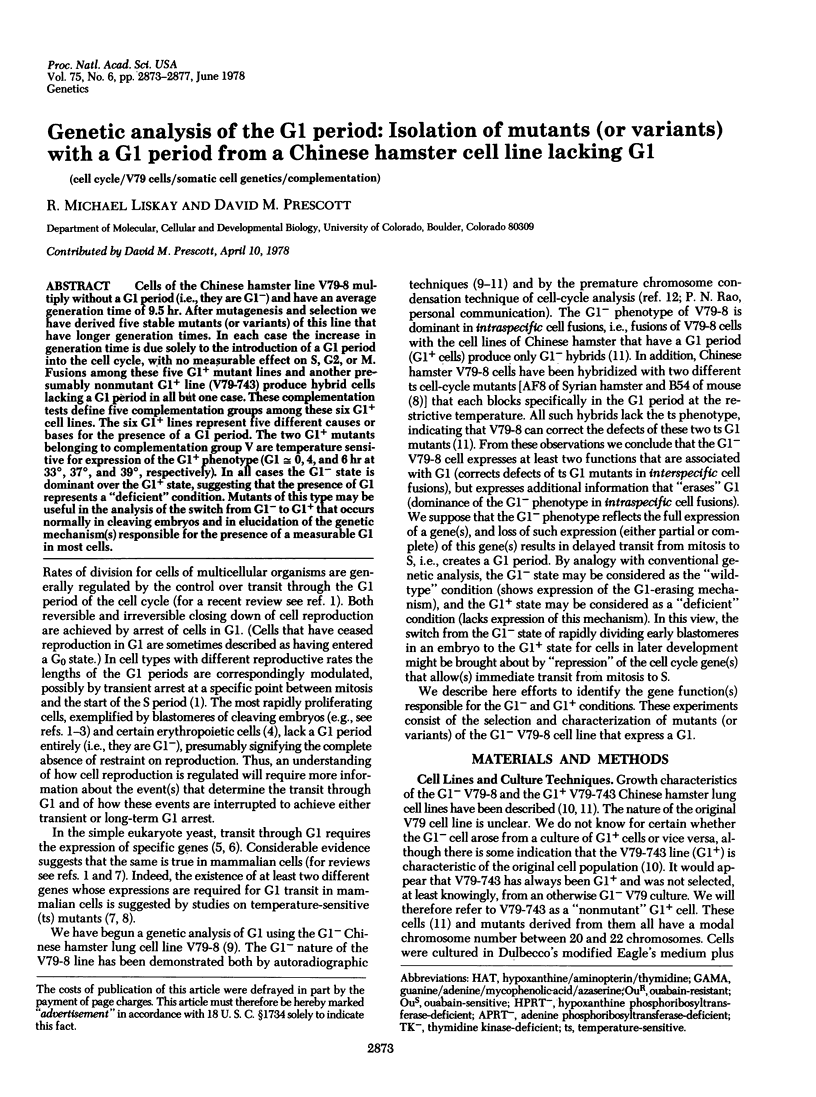
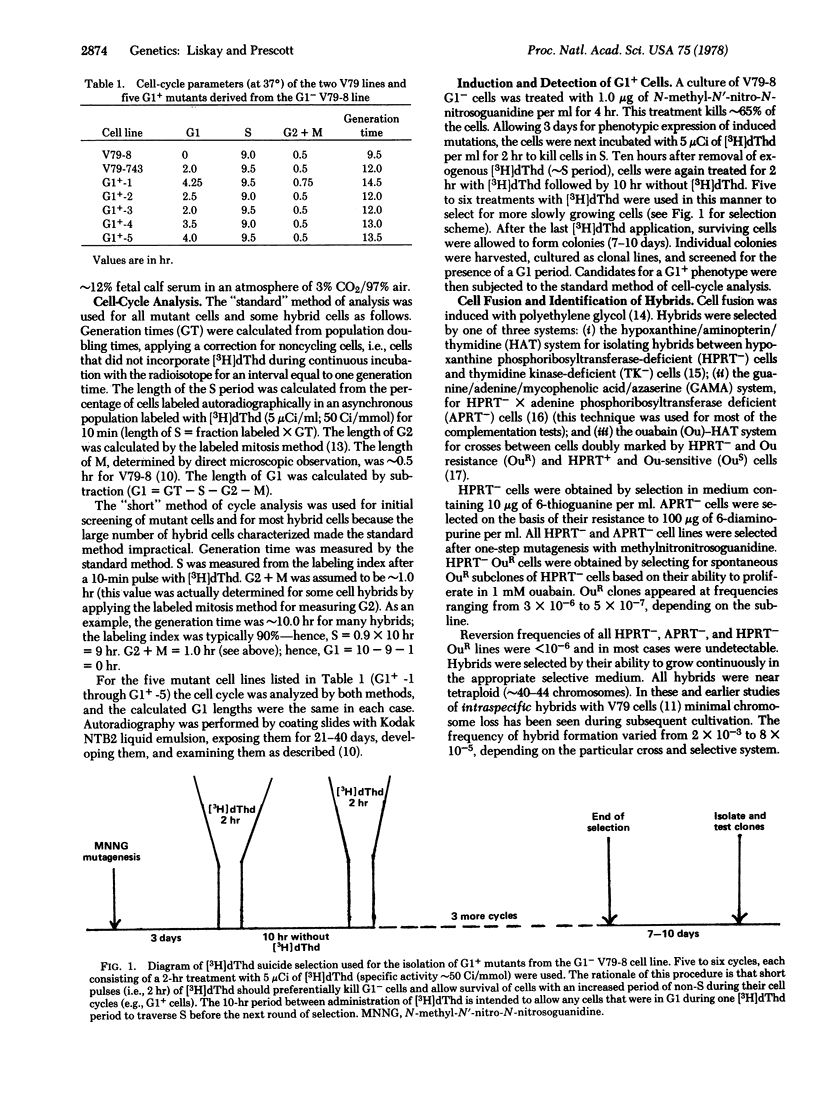
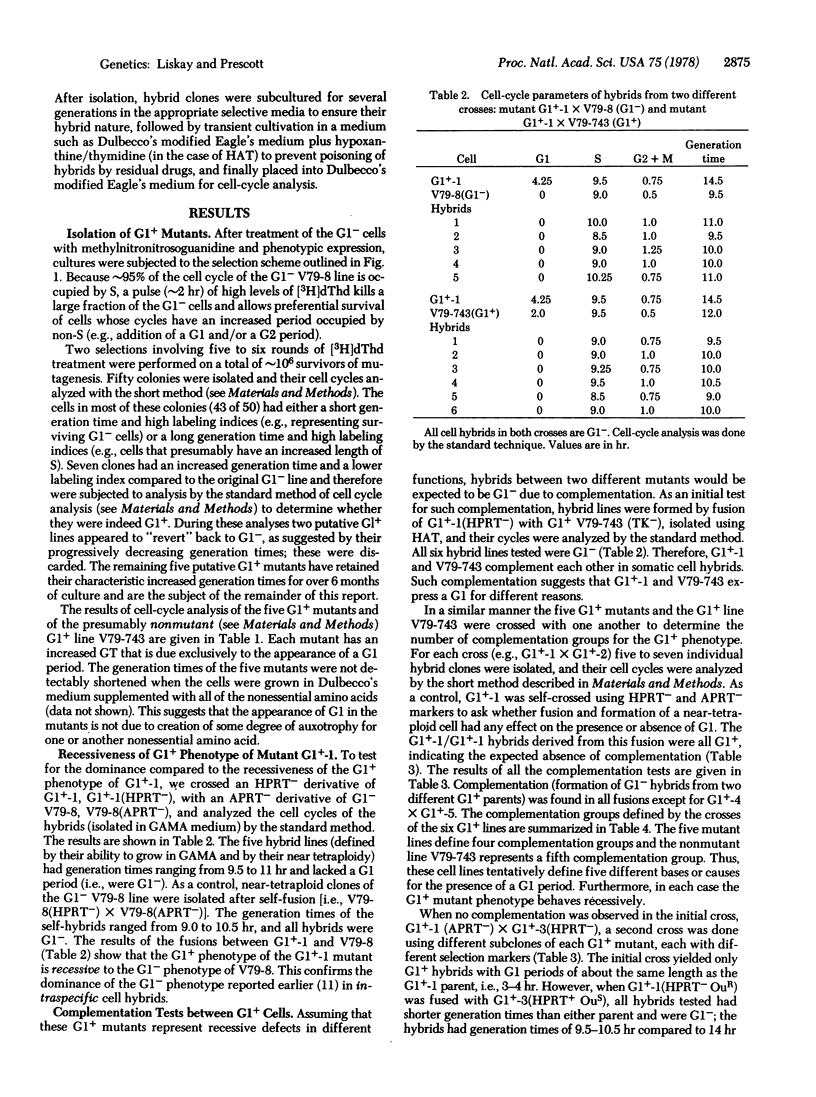
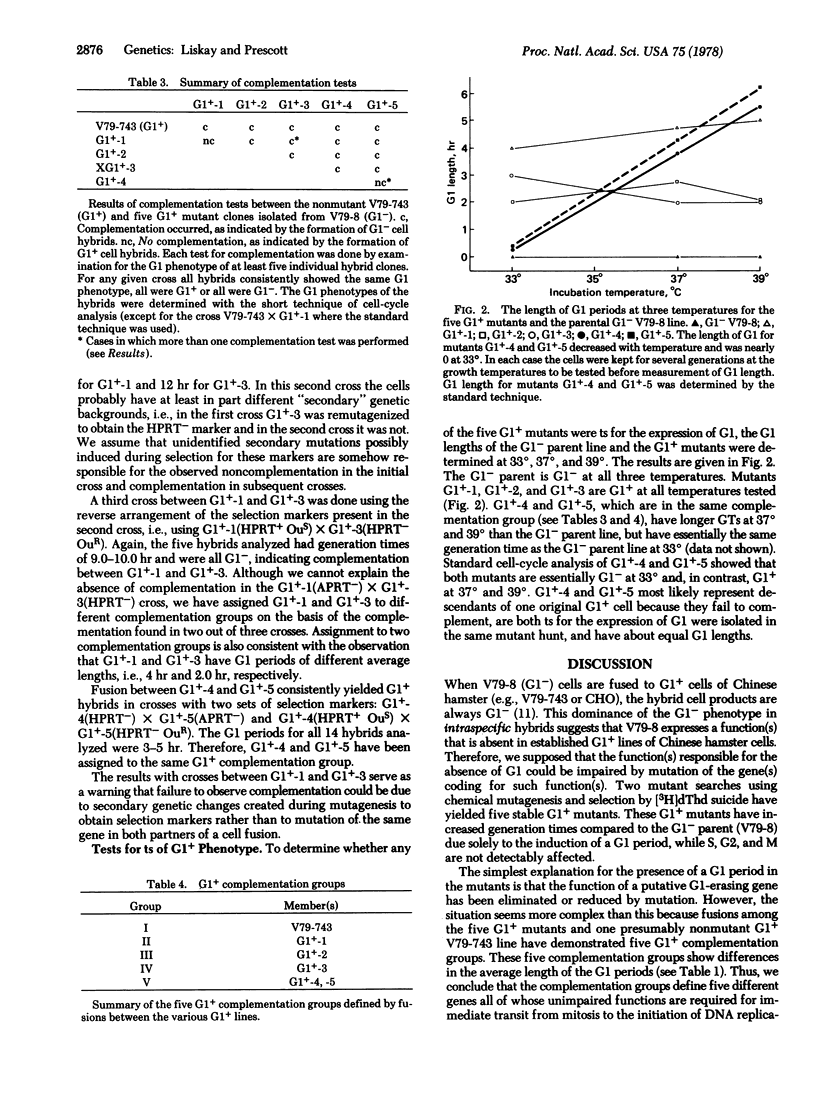
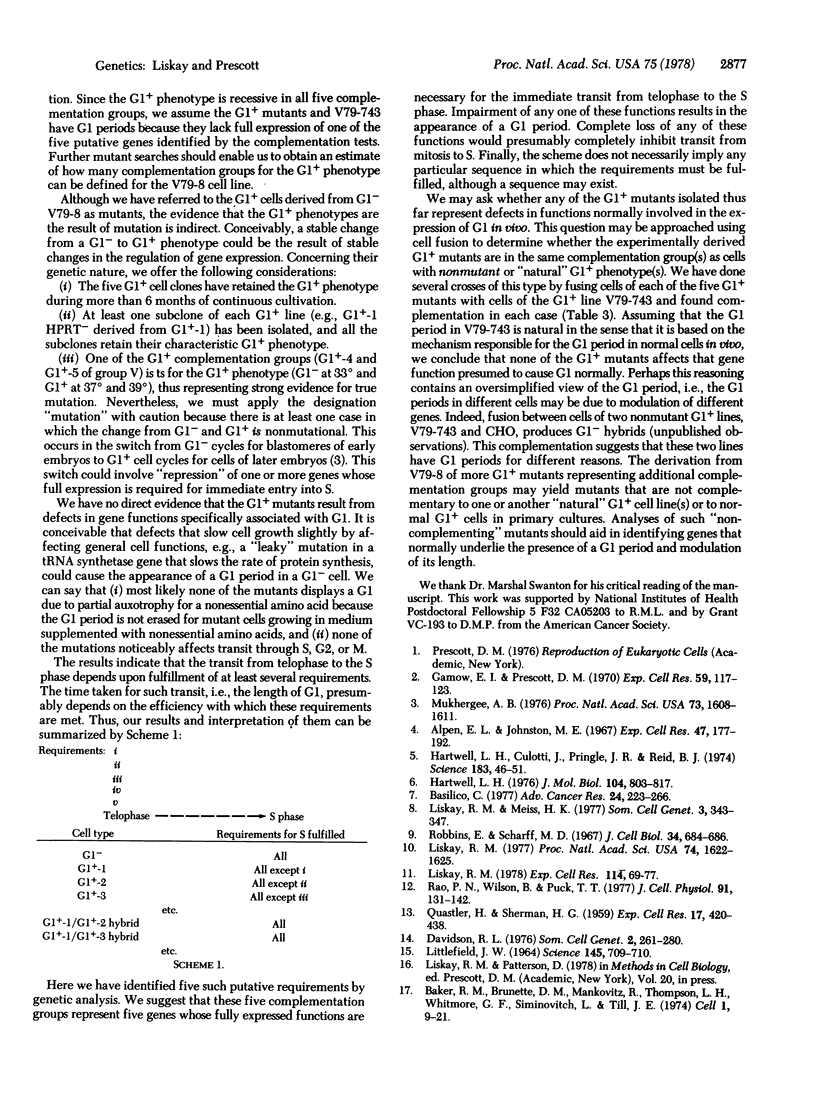
Selected References
These references are in PubMed. This may not be the complete list of references from this article.
- Alpen E. L., Johnston M. E. DNA synthetic rate and DNA content of nucleated erythroid cells. Exp Cell Res. 1967 Aug;47(1):177–192. doi: 10.1016/0014-4827(67)90221-2. [DOI] [PubMed] [Google Scholar]
- Basilico C. Temperature-sensitive mutations in animal cells. Adv Cancer Res. 1977;24:223–266. doi: 10.1016/s0065-230x(08)61016-7. [DOI] [PubMed] [Google Scholar]
- Gamow E. I., Prescott D. M. The cell life cycle during early embryogenesis of the mouse. Exp Cell Res. 1970 Jan;59(1):117–123. doi: 10.1016/0014-4827(70)90630-0. [DOI] [PubMed] [Google Scholar]
- Hartwell L. H., Culotti J., Pringle J. R., Reid B. J. Genetic control of the cell division cycle in yeast. Science. 1974 Jan 11;183(4120):46–51. doi: 10.1126/science.183.4120.46. [DOI] [PubMed] [Google Scholar]
- Hartwell L. H. Sequential function of gene products relative to DNA synthesis in the yeast cell cycle. J Mol Biol. 1976 Jul 15;104(4):803–817. doi: 10.1016/0022-2836(76)90183-2. [DOI] [PubMed] [Google Scholar]
- LITTLEFIELD J. W. SELECTION OF HYBRIDS FROM MATINGS OF FIBROBLASTS IN VITRO AND THEIR PRESUMED RECOMBINANTS. Science. 1964 Aug 14;145(3633):709–710. doi: 10.1126/science.145.3633.709. [DOI] [PubMed] [Google Scholar]
- Liskay R. M. Absence of a measurable G2 phase in two Chinese hamster cell lines. Proc Natl Acad Sci U S A. 1977 Apr;74(4):1622–1625. doi: 10.1073/pnas.74.4.1622. [DOI] [PMC free article] [PubMed] [Google Scholar]
- Liskay R. M. Genetic analysis of a Chinese hamster cell line lacking a G1 phase. Exp Cell Res. 1978 Jun;114(1):69–77. doi: 10.1016/0014-4827(78)90037-x. [DOI] [PubMed] [Google Scholar]
- Liskay R. M., Meiss H. K. Complementation between two temperature-sensitive mammalian cell mutants, each defective in the G1 phase of the cell cycle. Somatic Cell Genet. 1977 May;3(3):343–347. doi: 10.1007/BF01538752. [DOI] [PubMed] [Google Scholar]
- Mukherjee A. B. Cell cycle analysis and X-chromosome inactivation in the developing mouse. Proc Natl Acad Sci U S A. 1976 May;73(5):1608–1611. doi: 10.1073/pnas.73.5.1608. [DOI] [PMC free article] [PubMed] [Google Scholar]
- QUASTLER H., SHERMAN F. G. Cell population kinetics in the intestinal epithelium of the mouse. Exp Cell Res. 1959 Jun;17(3):420–438. doi: 10.1016/0014-4827(59)90063-1. [DOI] [PubMed] [Google Scholar]
- Rao P. N., Wilson B., Puck T. T. Premature chromosome condensation and cell cycle analysis. J Cell Physiol. 1977 Apr;91(1):131–141. doi: 10.1002/jcp.1040910113. [DOI] [PubMed] [Google Scholar]
- Robbins E., Scharff M. D. The absence of a detectable G1 phase in a cultured strain of Chinese hamster lung cell. J Cell Biol. 1967 Aug;34(2):684–686. doi: 10.1083/jcb.34.2.684. [DOI] [PMC free article] [PubMed] [Google Scholar]


